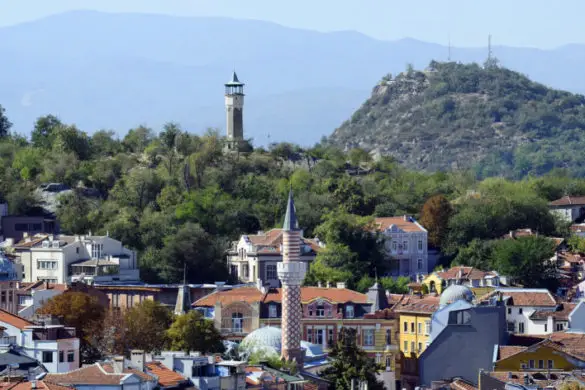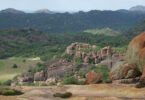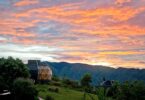Table of Contents
Here Is The List Of 10 Best Places Solo Travellers Should Explore in Tunisia
Solo travelling is said to be for the brave, a lot of people might not understand it because they are thinking who will you share the experience with ? However, travelling alone can be very freeing, you get to see what you want to see and let the wind guide you without worrying about another person, if they are having fun or not. It is a great time for self-discovery and finding independence. I believe a person should at least attempt a solo journey at least once in their lives and see where it leads them. One of the great places to explore solo is Tunisia.
Sidi Bou Said

Perched on a cliff overlooking the Mediterranean Sea is one of the most beautiful towns in Tunisia, Sidi Dou Said. Dotted with stunning traditional buildings, whitewashed and beautifully accented with shades of blue. It’s been accepted as a bohemian paradise for a long time, but with a flurry of trendy boutique hotels popping up, it’s now attracting a more up-market crowd. The narrow cobbled streets lined with trendy cafés, art shops and souvenir stalls framed by fragrant, cascading flowers tingle the senses. The city is a perfect base to visit the nearby Roman ruins of Carthage.
Hammamet
This was once a humble fishing village surrounded by lemon groves, but it is now a vibrant resort town lined with trendy hotels. In reality, Tunisia must see a tourist destination because of its fine beaches and warm waters, which are perfect for a host of water sports. Hammamet has a beautiful historic centre crossed by narrow alleyways, and here you can find an attractive medina and a 12th century Kasbah.
Kairouan

Kairouan is the most ancient Arab-Muslim base in the Maghreb (670 AD) making it one of the principal holy cities. For five centuries, the capital of Ifriqiya was a place of great diffusion for the Arab-Muslim civilisation. Kairouan is a rare witness to the first centuries of this civilization and its architectural and urban growth. Hundreds of columns borrowed from ancient Carthaginian and Roman systems show a wide variety of capitals in different coloured marbles. When you look at the hotel La Kasbah, you’re not going to be disappointed! You’re going to love mosaics and tiling
Chebika
Chebika is an oasis at the foot of the Djebel el Negueb Mountains. It was once a Roman outpost, but later it became a mountain sanctuary for the Berber people. Today, only a few hundred people live in this area. Many scenes from the famous Star Wars Episode IV: A New Hope and The English Patient movies have been filmed in this place.
Chebika is located about 50 kilometres away from Tozeur, which is a popular starting point for tourists to depart from Tozeur by 4×4 vehicles to Chebika. Upon arrival in Chebika, local guides will lead you on a 40-minute walk to the waterfall. Take the time to wonder at the river running from the rocks and watering the palms. It’s so beautiful to see the clear blue water in the mountains. After climbing up the mountain, you’ll be rewarded with a stunning view of the mountain, the oasis and the salt flat of Chott El Jerid.
Grand Oriental Erg

Tunisia is home to 40,000 square kilometers of sandy desert, part of the Grand Erg Oriental, offering a breath-taking panoramic view of the dunes formed by the wind. Gently undulating or imposing waves of sand, they turn from yellow to pink at dawn – a rare sight that is more than just a night spent in a bivouac to capture it. The landscape is constantly shifting, and often there is a strange surprise: a well-filled lake, mountains looming over the dunes, basins full of undergrowth and shrubs, or even a lake populated by ducks and egrets. Local guides and camel drivers offer the benefits of their passion and expertise to everyone who wants to explore the emotions of a journey through the Sahara.
THE TUNIS MEDINA

Declared a UNESCO World Heritage Site in 1979, the Tunis medina is a sensory experience not to be missed. Even in Ramadan, the city is buzzing with life. Though most of the population has been fasting during my visit to Ramadan, people are out in droves to shop for products in advance of Iftar’s dinner. The narrow alleyways of the souks feed on vast markets of fruit, fish, dried tea leaves, soaps, perfumes, and more. I always enjoyed watching all ages go about their daily lives, line up for buttermilk and candy to take home and enjoy the sundown. The contrasting architecture of downtown Tunis is outside the medina. The striking buildings are best characterized as an eclectic mix of old and new, restored, under renovation or in need of restoration.
THE BARDO MUSEUM
The Bardo National Museum is the oldest in Africa! The exquisite mosaics and architectural details, housed in a beylish palace, have dazzled tourists since 1888. Imagine if, in modern times, we decided to tell our stories through tiny tiles on every surface of our homes—the floors, the walls, the ceilings, even the bathtubs. And even then, imagine that it will last for thousands of years and that it will be fascinating and clever enough for generations to interpret later.
TESTOUR

This sleepy village is one of the finest examples of Andalusian architecture to be found anywhere in Tunisia. In the early 17th century, when Muslims and Jews were expelled from Spain, North Africa was filled with refugees. Some of the rich settled in Tunis, but others who wanted to develop roots nearby had to ask the Ottoman government for land, and they were given the ancient Roman ruins of Tichilla, now called Testour.
DOUGGA
It’s hard to explain what it’s like to run your fingertips through the words that were carved in the 6th century BC. The ancient hilltop town of Dougga, also known as Thugga, is a UNESCO World Heritage Site. Located a little less than 50 miles from the border between Tunisia and Algeria, the region has been an excellent example of the birth, growth and history of an indigenous town since the second millennium BC. The city flourished under Roman and Byzantine rule but declined in the Islamic era. Nestled in a lush valley (Oued Khalled) of olive trees, the ruins are beautifully preserved, generally considered to be the best-preserved Roman ruins in North Africa. Perhaps most shocking of all the site attracts just 50,000 visitors per year.
Matmata

Movie fans will immediately recognize Matmata’s interesting troglodytic houses – when director George Lucas visited here he was so engrossed with the area he used as a set in his famous Star Wars movies. It’s a strikingly beautiful location, home to attractive honeycomb granaries known as k-ghorfas. The curious style of architecture derives from the fortified Berber settlements and is so unique that they almost look different-worldly.








